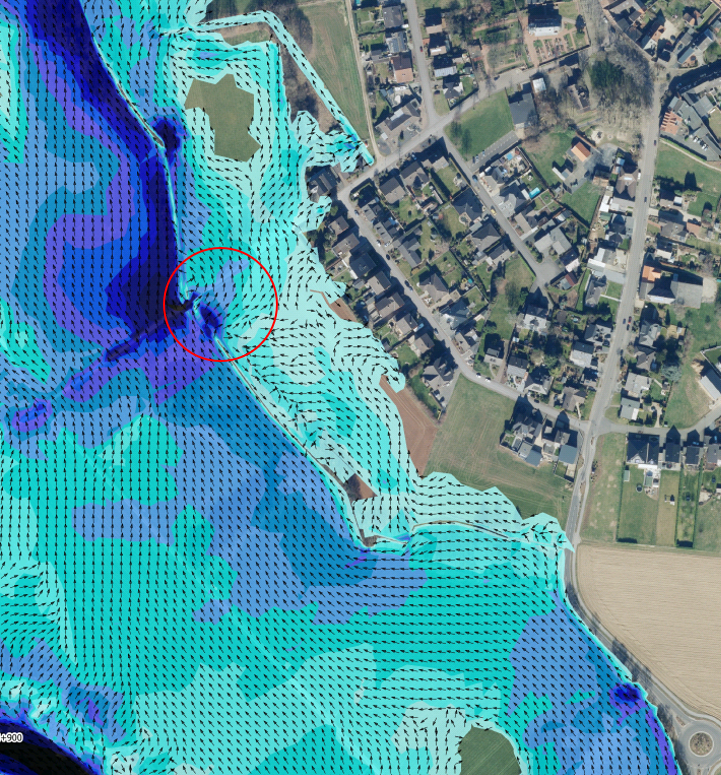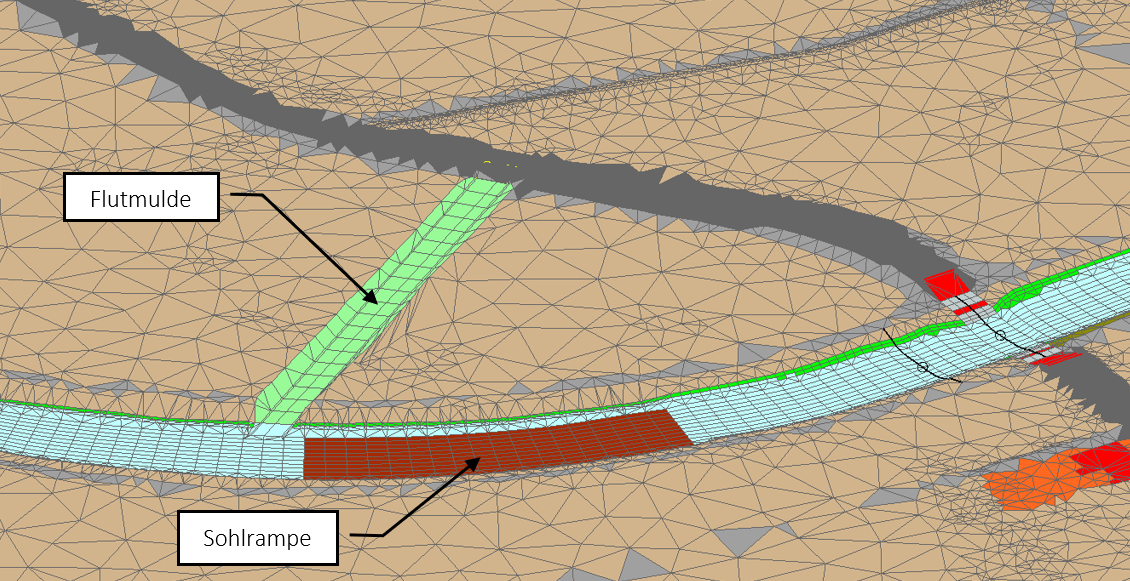General information
Client: Water board Eifel-Rur
Location: Germany
Project duration: 06/2018 - 09/2020
Key characteristics: 2D-hydraulics
Project description
For the upgrading of the dike at Ophoven on the Rur planned by the WVER, the effects of the new planning on the flood discharge of the Rur were determined by means of two-dimensional hydraulic calculations.
The hydraulic model of the Rur already created for the HWGK served as a basis. The hydraulic calculations were carried out for the load case HQ100.
The actual condition, the planned condition of the dike, the condition without dike as well as conditions with planned measures in the Rur were modeled.
Furthermore, the implementation of a bottom ramp uh. of the gauge Stah was investigated, the weir Karken was grinded to be able to assess the influence of this, the Ruhr bottom and embankments were adjusted and secondary floodplains were created. In further scenarios, an additional dam was also constructed, as well as a flood channel to divert the water into the Rur. The evaluation was carried out on the basis of water level positions and inundation areas.
Likewise, the freeboard was evaluated for the calculation runs actual condition HQ100, actual condition HW2011 and planned condition HQ100 as well as dike failure scenarios with static and dynamic failure conditions were investigated.
Services
• Hydraulic investigation of the effects of the upgrading of the dike at Ophoven on the river Rur
• Calculations for actual condition, planned dike condition, condition without dike as well as conditions with planned measures in the river Rur
• Installation of a riverbed ramp downstream of the gauge Stah, grinding of the weir Karken, levelling of the Rur bottom as well as the embankments in the intermediate area
• Creation of secondary floodplains along the river Rur
• Evaluation on the basis of water level and inundation areas as well as a freeboard evaluation for the scenarios actual state HQ100, actual state of the flood from 2011 and planned state HQ100
• Further scenarios with additional embankment and flood basin
• Levee failure scenarios with static and dynamic failure conditions
Skills
• Interpretation and evaluation of calculation results from 2D hydraulic modeling





